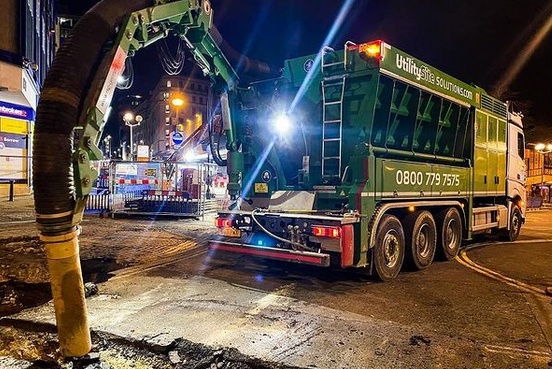Introduction
Safe Dig Vacuum Excavations have emerged as a crucial technique in construction and utility works to unearth hidden dangers while preserving the integrity of existing structures and utilities. This non-destructive and precise method allows for the safe and efficient removal of soil and debris, minimizing the risks associated with traditional digging techniques. In this article, we will explore the importance of safe dig vacuum excavations, its benefits, and its contribution to enhancing safety and efficiency in excavation projects.
Understanding the Need for Safe Dig Vacuum Excavations
Excavation is a fundamental process in various industries, including construction, infrastructure development, and utility maintenance. Traditional excavation methods, such as using backhoes or shovels, can pose significant risks to underground utilities and structures. Accidental strikes on gas, water, or electrical lines can result in hazardous incidents, service disruptions, costly repairs, and even injuries or fatalities.
Safe Dig Vacuum Excavations, also known as non-destructive digging or hydro vacuum excavation, have gained popularity as a safer alternative to conventional digging methods. This method utilizes high-pressure water or air to break up soil and debris, while a vacuum system simultaneously removes the dislodged material, leaving the underlying utilities intact and undamaged.
The Importance of Safe Dig Vacuum Excavations
Enhanced Safety: Safety is paramount in any construction or utility project. Safe Dig Vacuum Excavations significantly reduce the risk of striking underground utilities, which can lead to gas leaks, water main breaks, electrical outages, and potential harm to workers and the public.
Damage Prevention: Traditional digging methods often cause accidental damage to underground utilities, resulting in costly repairs and service disruptions. Safe Dig Vacuum Excavations help prevent such damage, thereby reducing project delays and additional expenses.
Precision and Accuracy: This method allows for precise and targeted excavation, ensuring that only the required area is dug out without disturbing the surrounding soil and structures. This level of accuracy is particularly beneficial in congested urban areas.
Environmental Protection: Safe Dig Vacuum Excavations have minimal impact on the environment as they produce less noise, vibration, and dust compared to traditional digging methods. The use of water-based excavation techniques further reduces environmental concerns.
Cost-Effectiveness: While Safe Dig Vacuum Excavations may require specialized equipment and operators, the long-term cost savings resulting from reduced damages and project delays make it a cost-effective solution.
Compliance with Regulations: Many regions have strict guidelines and regulations pertaining to excavation near underground utilities. Safe Dig Vacuum Excavations help companies comply with these regulations and avoid potential penalties.
The Process of Safe Dig Vacuum Excavations
Safe Dig Vacuum Excavations involve several key steps:
Site Survey and Marking: Before excavation begins, the site is surveyed to identify the locations of underground utilities. These utilities are then clearly marked to provide guidance during the excavation process.
Soil Dislodging: A high-pressure water or air lance is used to break up the soil and create a slurry. The soil particles mix with water or air, making it easier to remove using the vacuum system.
Vacuum Removal: The vacuum system, connected to the excavation area, efficiently sucks up the soil slurry and debris, transporting it into a holding tank on the excavation vehicle.
Soil Disposal: The collected soil is transported to a designated area for proper disposal or, if it is uncontaminated, it may be used for backfilling once the excavation is complete.
Benefits of Safe Dig Vacuum Excavations
Unearthing Hidden Dangers: Safe Dig Vacuum Excavations allow workers to identify and avoid underground utilities, reducing the risk of utility strikes and associated hazards.
Time Efficiency: The precise and non-destructive nature of this method saves time by eliminating the need for repairs or rework caused by accidental utility damages.
Minimizing Disruptions: By preventing damage to utilities, Safe Dig Vacuum Excavations help maintain continuous service for essential utilities like water, gas, and electricity.
Preservation of Infrastructure: The accuracy of this method ensures that existing structures, such as pipes and cables, remain intact during excavation, extending their lifespan.
Versatility: Safe Dig Vacuum Excavations can be used in various soil types and terrain, making them suitable for a wide range of projects.
Conclusion
Safe Dig Vacuum Excavations have revolutionized the way underground utility works and construction projects are carried out. The importance of this method lies in its ability to prioritize safety, minimize damage, and enhance efficiency. By unearthing hidden dangers without causing harm to existing utilities and structures, Safe Dig Vacuum Excavations ensure the smooth progress of construction and utility works, while safeguarding the well-being of workers and the public. As the need for precision and environmental responsibility grows, the adoption of Safe Dig Vacuum Excavations is increasingly becoming an industry standard, paving the way for safer and more sustainable excavation practices.


No comments yet